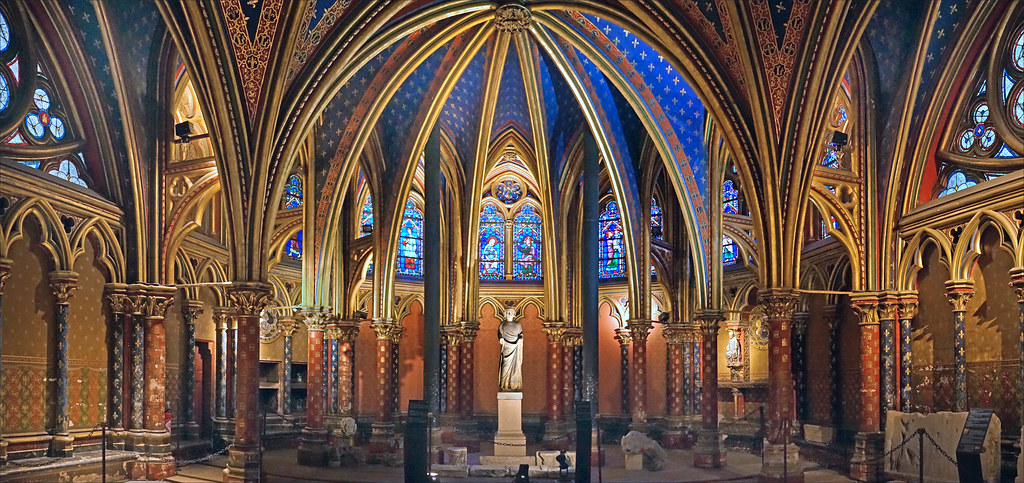What relics to see in Paris? Objects of reverence, relics are part of a deceased Holy person’s body. Throughout the middle ages, Christians venerated these holy artifacts. Since the time of Charlemagne every church was actually required to have a relic for their altar. Having relics related to Saints and Apostles would give a church credibility and attract parishioners. Paris, in fact, possesses many unique and important relics in its churches.
The Sainte-Chapelle in Paris was actually built as a reliquary – literally a container that holds a relic. King Louis IX, who later became Saint Louis, had acquired the most important relic in Christianity: the crown of thorns. Purchased from the Emperor in Constantinople, the crown of thorns and other relics from the crucifixion of Christ, were brought back to Paris thus making the city very important. After the French Revolution in 1789, the crown of thorns was moved to the Notre Dame Cathedral, where it is taken out on the first Friday of every month for a special mass. This tradition continued until the fire at the cathedral last April, when fortunately the crown and other relics were saved by the fire brigades. Now, the Crown of Thorns, along with other important relics and treasures from Notre Dame are being kept safely in storage at the Louvre.

There are still many other relics that you can see in Paris, though!
An important Saint in Paris, Saint Genevieve, lived in the 5th century. When Atilla and the huns were attacking Europe, she assured Parisians that their city would be spared, telling them not to flee, but to pray. Genevieve held prayer vigils and Paris wasn’t attacked, so she became the patron Saint of the city. In the 6th century a church was dedicated to her on the Mount Saint Genevieve, where her tomb was located. This is now the site of the Pantheon. Many of her relics were destroyed during the French Revolution, but the pieces are enshrined in a small chapel at the St. Etienne-du-Mont church, next to Pantheon. Visitors can see Genevieve’s finger bone and her burial stone, encased in a spectacular glass and gold reliquary.
At the church of Saint Severin, in the Latin Quarter, you can see the bones of Saint Ursula in a glass case.
Saint Vincent de Paul was a priest during the 17th century who dedicated himself to serving orphans and outcasts of society. At the Saint Vincent de Paul chapel in the 7th arrondissement there is a wax effigy of the Saint, in which his bones are encased, contained within a 19th century silver reliquary made by Odiot, a famous French neoclassical silversmith. You can find the wax effigy by taking stairs behind the altar. Not far away, The Chapelle Notre Dame of the Miraculous Medal, is located just behind the Bon Marche department store. This chapel houses the relics of Saint Catherine Laboure, a 19th century nun. After venerating the relics of Saint Vincent de Paul, Catherine had visions of the Saint’s heart, each time in a different color: white, red and then black. She believed that it foretold misfortunes for Paris.
Saint Catherine was then reported to be visited by the Virgin Mary in the chapel. When Catherine saw the Virgin, Mary asked her to make the Miraculous Medal of Our Lady of Graces, which is now worn by people around the world. The body of Saint Catherine, believed to be incorrupt, is encased in a glass reliquary beneath one of the side chapels. Because the chapel is a site of a vision of the version Mary, it is a Catholic pilgrimage site. Many people visit this church believing that they will be healed from sickness.
Traveling to Paris soon? Skip the hassle of planning – we design your dream Paris vacation! Request a custom itinerary of Paris here:




